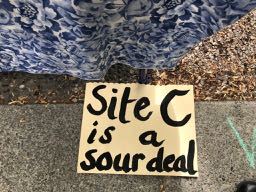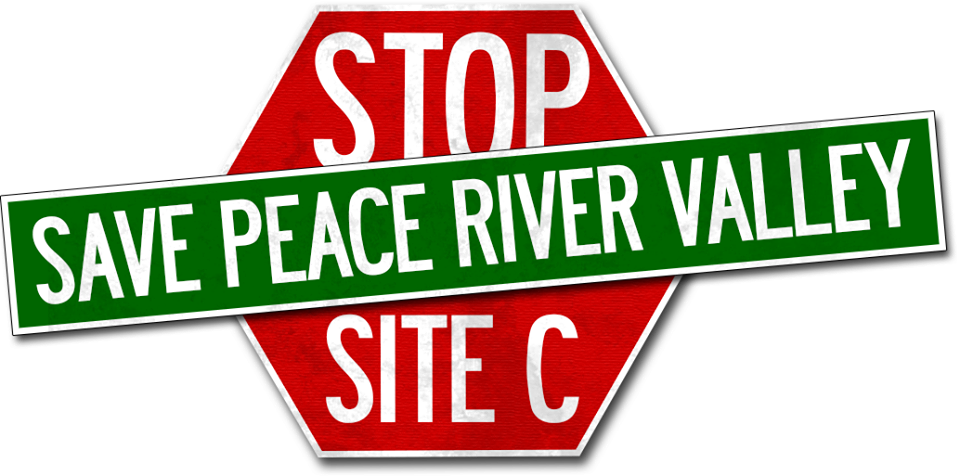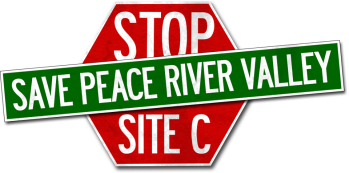Indigenous Rights, Treaty 8 and Reconciliation
Join the conversation: July 5, 6:30-9:30 pm, a public discussion will take place at Douglas College’s Aboriginal Gathering Centre, to investigate just what is going on when it comes toIndigenous Rights, Treaty 8 and Reconciliation
Featuring special guest Chief Bob Chamberlain, (@chiefbobby)Vice President of the Union of BC Indian Chiefs, the evening will headline talks by UBC specialist in Aboriginal Law, Dr. Gordon Christie, Inupiat/Inuvialuit, Julian Napoleon, Dane-zaa/Cree researcher on Indigenous Food and Culture, Adrienne Peacock, faculty emeritus of Douglas College, and former member of the BC Utilities Commission and Emilie Smith, Rector at New Westminster’s St Barnabas Anglican Church. (see bios attached)
What is going on?
The West Moberly and Prophet River Bands from Northeast BC and signatories to Treaty 8, will return to court on July 23rd. They are seeking injunctions to prevent BC Hydro from going ahead with work on the Site C Dam, at least, until the conditions of Treaty 8 are settled by the courts. BC Hydro and the BC NDP government are contesting the injunction. The Federal Government recently stated that it will not contest the injunction. International groups including the UN and Amnesty International are calling on all governments to respect Indigenous Rights and the United Nations Declaration on Indigenous Rights (UNDRIP)
Meanwhile, the Blueberry River Band, also from Northeastern BC and a Treaty 8 signatory, will be in court, this summer, as well, in a case brought by the Band against the BC Government, charging that the cumulative impact of industrial development on its traditional territory has breached the government’s obligations under Treaty 8.
Dr. Gordon Christie says, “Canadians are treaty partners within the treaty 8 regime, and so should be concerned that promises made in Treaty 8 – on their behalf – are being upheld.”
Christie emphasizes, “Besides being an economic boondoggle that will only serve to provide cheap power to the oil & gas industry as it goes about fracking in the northeast, flooding caused by the dam will make the exercise of constitutionally-protected treaty rights impossible”
Mae Burrows, Burnaby resident and long-time activist with Fight C is one of the of the July 5thevent organizers, “The Crown signs Treaties with First Nations on behalf of the people of British Columbia and Canada. It’s time we step up to the plate and demand that Governments respect those treaties.”
“What is it with all these court cases?” says Burrows. “British Columbians want to know why First Nations have to go to court to have Treaty rights respected. Why are First Nations still being treated as colonial subjects?”
Last year, the Blueberry Band lost its court petition for an injunction to stop work on Site C however, the judge ruled that “irreparable harm” had been done by industry.
Territory in Northeastern BC and extending into Alberta, has been the scene of an unbelievable amount of destruction as a result of industrialization from mining to gas and oil extraction in the last century.
West Moberly, Prophet River and Blueberry River Bands say again, “enough is enough!”
What can Canadians do to help stop Site C? Julian Napoleon is clear, “If people could come to an understanding of the major threat to our economy, environment, human rights, democracy, and the public institution of BC Hydro, that Site C presents I believe that no rational human being could continue to support the project.”
“Public interest is served by information sharing and open discussion.” concludes Burrows, “and that is what this event is all about.”
The evening is a fundraiser and pay-what-you can with food, music and the chance to meet face-to-face with people who are working on the ground and in the courts to try to convince the BC Government of John Horgan and his local MLA ‘s some of whom are cabinet ministers: Judy Darcy, Mike Farnworth, Selena Robinson, Jodie Wickens, Bruce Ralston, Harry Bains, Raj Chouhan, Janet Routledge and Anne Kang.
All proceeds of the evening will go to three court cases: West Moberly and Prophet River Bands injunction request, the Blueberry River Bands Treaty 8 case and the case being brought forward by the Peace Valley Landowners Association* whose members are the farmers and ranchers whose farms fall within the 140,000 square kilometers of land targeted for flooding for the Site C Dam. That territory is equal to the land between Maple Ridge and Hope. Just think about it.
The event is sponsored by Aboriginal Services, Douglas College and Fight C.
-30-
Information/Interviews: Mae Burrows 604-526-1956 (h) 604) 916-9026 (c)
Peace Valley Landowners Association(PVLA The PVLA consists of landowners who are impacted by the proposed Site C dam. The 70+members reflect a cross section of Peace River Country residents from farmers to oil patch workers and retirees many of whom lost their homes when the WAC Bennet Dam was built in the 1960’s. http://peacevalleyland.com/
For Information on the resistance to the Site C Dam https://witnessforthepeace.c

 by these mining companies.
by these mining companies. 2909 W Broadway, Vancouver
2909 W Broadway, Vancouver


 Thanks to the
Thanks to the 
 Like many others who live in the Lower Mainland of British Columbia I’ve never been to the Peace River Valley. I knew nothing of the people who have lived in the area for hundreds if not thousands of years. People in my own family went to work on the first damming of the Peace River known as the W.A.C. Bennett Dam after the B.C. Premier who promoted the dam. No consideration was given to the people whose lands were flooded to create the first dam. Not until 50 years later when in 2017 BC Hydro apologized for the pain and harm brought about by the dam’s construction. But that did not stop BC Hydro or the newly minted coalition government from proceeding with a new dam, the Site C despite strong arguments that it will destroy farm more than it will create well being.
Like many others who live in the Lower Mainland of British Columbia I’ve never been to the Peace River Valley. I knew nothing of the people who have lived in the area for hundreds if not thousands of years. People in my own family went to work on the first damming of the Peace River known as the W.A.C. Bennett Dam after the B.C. Premier who promoted the dam. No consideration was given to the people whose lands were flooded to create the first dam. Not until 50 years later when in 2017 BC Hydro apologized for the pain and harm brought about by the dam’s construction. But that did not stop BC Hydro or the newly minted coalition government from proceeding with a new dam, the Site C despite strong arguments that it will destroy farm more than it will create well being.



 Water protectors come in waves day after day, singing songs like:
Water protectors come in waves day after day, singing songs like: